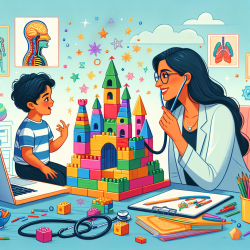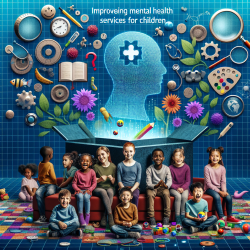Introduction
Creativity is often seen as a mysterious and elusive trait, yet research shows that it can be nurtured and developed through specific activities and environments. In the realm of child development, play is a critical component in fostering creativity. Dr. Sandra Russ, a distinguished scholar in the field of creativity and play, provides valuable insights into how play acts as a creative product and its implications for therapeutic practices.
The Role of Play in Creativity
Dr. Russ emphasizes that for children, play is not merely an activity but a creative product. Play allows children to express themselves, synthesize new ideas, and engage in divergent thinking. This process is crucial for developing creativity, as it enables children to explore their emotions and thoughts in a safe and imaginative environment.
Through her research, Dr. Russ has developed the Affect in Play Scale, a tool used to measure imagination and emotional expression in pretend play. Her findings indicate a strong correlation between pretend play and areas of adaptive functioning such as creativity, coping, and emotional understanding.
Implications for Practitioners
For practitioners in speech-language pathology and related fields, integrating play into therapeutic practices can enhance outcomes for children. Here are some strategies based on Dr. Russ's research:
- Encourage Open-Ended Play: Provide opportunities for children to engage in play that is not restricted by specific rules or outcomes. This type of play fosters creativity and problem-solving skills.
- Use Play as a Diagnostic Tool: Observe children's play to gain insights into their emotional and cognitive development. The Affect in Play Scale can be a valuable resource for assessing these aspects.
- Facilitate Guided Play: For children who struggle with play, guided interventions can help develop their creative potential. Practitioners can support children in creating imaginative stories and scenarios.
Creativity Across the Lifespan
While play is essential for children, Dr. Russ highlights that creativity should be nurtured throughout life. Adolescents and adults also benefit from engaging in creative activities, which can improve mental health and emotional well-being. Encouraging creative expression in teenagers through arts programs and academic projects can foster growth and problem-solving skills.
In times of crisis, such as the COVID-19 pandemic, creativity and play become even more critical. Dr. Russ notes that play helps individuals process challenges and emotions, providing a therapeutic outlet during difficult times.
Conclusion
Dr. Sandra Russ's research underscores the importance of play as a vehicle for creativity and emotional expression. By integrating play into therapeutic practices, practitioners can support children's development and enhance their creative potential. As we continue to navigate an ever-changing world, nurturing creativity through play remains a vital component of fostering resilience and adaptability.
To read the original research paper, please follow this link: Playing with Creativity Across the Lifespan: a Conversation with Dr. Sandra Russ.










